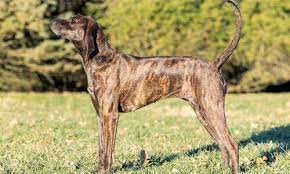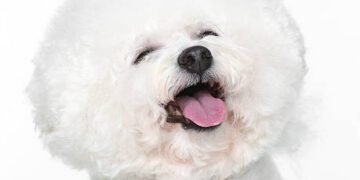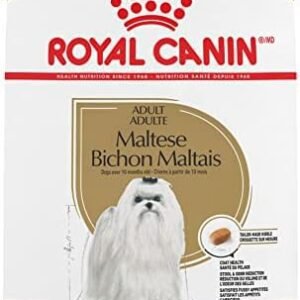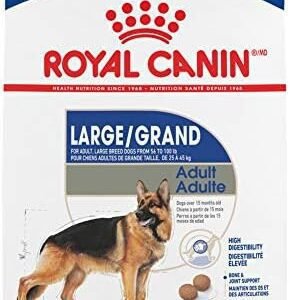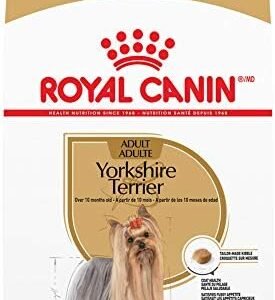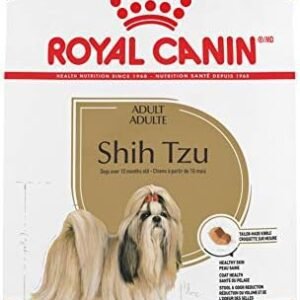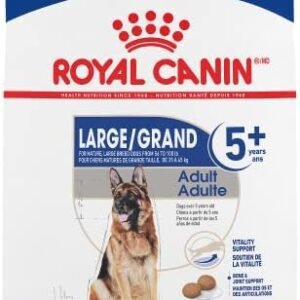The Alaskan Klee Kai, often referred to as the “Miniature Husky,” is a captivating dog breed that has been capturing the hearts of dog enthusiasts around the world. Before we delve into the specifics of this remarkable breed, let’s begin with an attention-grabbing fact: Alaskan Klee Kais were originally developed in the 1970s to be a smaller version of their Alaskan Husky counterparts. This unique history sets them apart from other breeds, and their distinctive qualities make them a fascinating subject of exploration.
When selecting a dog breed, it’s crucial to understand the significance of choosing the right one that aligns with your lifestyle. A dog’s breed greatly influences their behavior, needs, and compatibility with your daily routines and preferences. The Alaskan Klee Kai is no exception, as it comes with its own set of characteristics that make it a truly unique and wonderful companion.
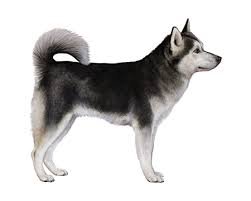
Alaskan Klee Kai: Key Characteristics
Let’s start by creating a table that summarizes key characteristics and information about the Alaskan Klee Kai breed. While we have data for most of the fields, it’s important to note that there may be certain areas where specific information is not known.
| Field | Information |
|---|---|
| Height | 13 to 17 inches (not known) |
| Weight | 10 to 20 pounds (not known) |
| Life Span | 12 to 16 years |
| Good with | Families, singles |
| Temperament | Intelligent, aloof, loyal |
| Intelligence | Very high |
| Shedding Amount | Moderate to heavy |
| Grooming | Regular brushing needed |
| Exercise Needs | Moderate |
| Energy Level | High |
| Barking Level | Moderate to high |
| Drool Amount | Minimal |
| Coat Length/Texture | Double coat, plush, thick |
| Colors | Various colors |
| Patterns | Various patterns |
The table above provides a glimpse of the key characteristics of the Alaskan Klee Kai breed, setting the stage for an in-depth exploration of its physical appearance, personality, grooming requirements, exercise needs, and areas where this breed excels. In the following sections, we will delve deeper into each of these aspects, providing you with a comprehensive understanding of the Alaskan Klee Kai dog breed.
Table of Contents
Breed History and Origin
Exploring Their Roots
The Alaskan Klee Kai’s history is a captivating tale of selective breeding and the desire to create a smaller version of the Alaskan Husky. The breed was developed in the 1970s in Alaska, USA, by a breeder named Linda Spurlin. Her goal was to produce a companion-sized dog resembling the Husky but with a smaller stature. To achieve this, she used Siberian and Alaskan Huskies along with American Eskimo Dog and Schipperke breeds. This careful breeding resulted in the Alaskan Klee Kai, often affectionately referred to as the “Miniature Husky.”
The influence of the Husky lineage is undeniable in the Alaskan Klee Kai’s striking appearance. From their distinctive coat patterns to their almond-shaped eyes and erect ears, they are reminiscent of their larger Husky relatives. However, their compact size and charming demeanor set them apart.
Notable Traits
The Alaskan Klee Kai carries several notable traits that have been inherited from its parent breeds and breeding history:
Size and Resemblance: The most striking feature is their resemblance to the Siberian Husky. They have a double coat, erect triangular ears, and a mask-like facial marking. Their size, though, is significantly smaller, making them a more manageable companion.
Adaptability: Due to their origin, Alaskan Klee Kais are well-adapted to colder climates. They thrive in cooler environments but can adapt to warmer ones with proper care.
Intelligence: Just like their Husky ancestors, Alaskan Klee Kais are highly intelligent dogs. They are quick learners and enjoy mentally stimulating activities.
Loyal and Aloof: They are known for their loyalty to their families but can be aloof around strangers. This protective nature makes them excellent watchdogs.
Distinctive Coat Patterns: Alaskan Klee Kais often exhibit striking coat patterns, including masks, facial markings, and unique color combinations. This adds to their visual appeal and individuality.
Relevance of Origin
The origin of the Alaskan Klee Kai is highly relevant in understanding their unique characteristics today. The deliberate combination of various breeds to create a smaller Husky-like companion has made them a distinctive and captivating breed. Their history explains their resemblance to Siberian Huskies while highlighting their more manageable size.
In the following sections, we will delve deeper into the physical characteristics, temperament, grooming requirements, exercise needs, and areas where the Alaskan Klee Kai excels as a companion dog. Understanding these aspects is crucial in making an informed decision about welcoming this breed into your life.
Understanding the Alaskan Klee Kai Breed’s Traits
Physical Characteristics
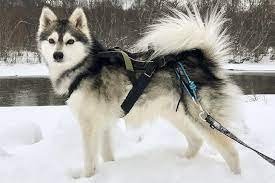
The Alaskan Klee Kai is a breed known for its striking physical characteristics. Let’s delve into the details of their appearance, which often draws people to this unique and captivating breed.
Size: Alaskan Klee Kais are small to medium-sized dogs. Their height typically ranges from 13 to 17 inches, with a weight of 10 to 20 pounds. The exact measurements can vary among individual dogs.
Coat Type: These dogs have a plush double coat that helps them stay warm in colder temperatures. Their thick fur can come in various colors and patterns, contributing to their visual appeal.
Color: Alaskan Klee Kais exhibit a wide range of colors, which may include black and white, gray and white, red and white, and even all-white coats. The diversity of coat colors adds to their uniqueness.
Distinguishing Features: The breed’s most distinguishing features include their mask-like facial markings and almond-shaped eyes. Their triangular ears stand erect, giving them an alert and attentive appearance. Some dogs may have striking patterns on their coat, making each Alaskan Klee Kai truly one-of-a-kind.
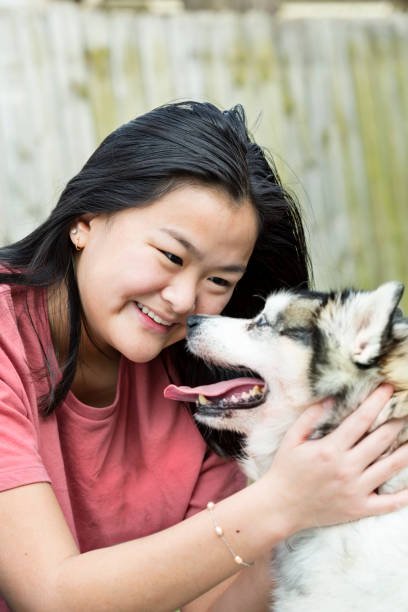
Temperament Overview
Understanding the temperament of the Alaskan Klee Kai is essential in determining whether they are the right fit for your family and lifestyle.
Family Suitability: Alaskan Klee Kais are known to be devoted to their families. They are loyal and loving, making them great companions for individuals and families alike. While they are generally good with children, it’s important to supervise interactions, especially with young kids, due to their small size.
Compatibility with Other Pets: The temperament of an Alaskan Klee Kai can be compatible with other pets, but early socialization is crucial. Their aloof nature towards strangers extends to other animals, so a well-socialized Alaskan Klee Kai is more likely to get along with other pets.
Environmental Needs
To provide the best care for an Alaskan Klee Kai, consider their environmental needs and suitability to your home.
Space Requirements: Alaskan Klee Kais are well-suited to both apartments and houses, as long as they receive adequate exercise. Their smaller size makes them adaptable to living in more confined spaces, but regular exercise is vital to their well-being.
Temperature Sensitivity: Due to their heritage, Alaskan Klee Kais are better suited to colder climates. While they can adapt to warmer environments, it’s crucial to provide them with a cool and comfortable living space during hot weather. Be cautious about overheating, especially during the summer months.
Common Behavioral Traits
Understanding the common behavioral traits of the Alaskan Klee Kai is important for responsible ownership. Here are some key aspects to consider:
Intelligence: These dogs are highly intelligent. They thrive on mental stimulation and problem-solving activities. Providing them with puzzle toys and interactive games can help keep their minds active and prevent boredom.
Protectiveness: Alaskan Klee Kais are protective of their families. This can manifest as aloofness around strangers and a readiness to alert their owners to any perceived threats. Early socialization can help them distinguish between real dangers and everyday occurrences.
Energy Levels: This breed has a high energy level. They require daily exercise and mental stimulation to keep them happy. Long walks, playtime, and activities that engage their minds are essential to prevent boredom-related behaviors.
Shedding and Grooming: Alaskan Klee Kais have a double coat that sheds moderately to heavily. Regular brushing is necessary to keep their coat healthy and minimize shedding. Additionally, their coat’s thickness may require extra attention during seasonal changes.
In the subsequent sections, we will explore grooming requirements, exercise needs, and areas where the Alaskan Klee Kai excels as a companion dog. These insights will provide you with a comprehensive view of what it takes to care for this unique breed.
Popularity and Recognition
In this section, we will explore the current popularity of the Alaskan Klee Kai, its recognition by kennel clubs and breed organizations, and any notable breed varieties or subtypes.
Current Popularity
The Alaskan Klee Kai has been steadily gaining popularity among dog enthusiasts in recent years. Their unique blend of striking Husky-like features in a smaller, more manageable size has captured the hearts of many. As a result, more individuals and families are considering Alaskan Klee Kais as potential companions.
One notable reason for their popularity is their suitability for various living arrangements, including apartments and houses. Their adaptability to different environments, provided they receive adequate exercise and care, makes them an appealing choice for a wide range of dog lovers.
Furthermore, their intelligence and loyalty endear them to those seeking devoted and trainable pets. In the modern world, where families often have busy schedules, the Alaskan Klee Kai’s moderate exercise needs and manageable size have become selling points.
The presence of Alaskan Klee Kai breeders and rescue organizations has also contributed to their popularity, as these resources make it easier for people to find and adopt these dogs. Social media and online communities dedicated to the breed have further facilitated their recognition and popularity.
Breed Recognition
The Alaskan Klee Kai’s path to breed recognition has been a journey from its early days to its current status. While they are not yet officially recognized by all major kennel clubs, they have made significant progress.
The United Kennel Club (UKC) recognized the Alaskan Klee Kai in 1997. This recognition marked an important step in the breed’s journey, and it allowed UKC events and shows to include Alaskan Klee Kais.
The American Kennel Club (AKC), one of the most well-known kennel clubs in the United States, does not yet officially recognize the Alaskan Klee Kai as of my last knowledge update in January 2022. However, the breed has been eligible to participate in AKC events through the Foundation Stock Service (FSS). This is often seen as a precursor to full AKC recognition, and it provides opportunities for breeders and enthusiasts to showcase the breed’s qualities.
Notable Breed Varieties
The Alaskan Klee Kai is a breed with distinct size variations rather than distinct varieties or subtypes. The three primary size classifications for the Alaskan Klee Kai are:
Toy: The smallest size classification includes Alaskan Klee Kais that stand up to 13 inches in height at the shoulder and weigh up to 10 pounds.
Miniature: The next size category encompasses Alaskan Klee Kais with a height ranging from 13 to 15 inches and a weight between 10 to 15 pounds.
Standard: The largest size classification includes Alaskan Klee Kais that measure between 15 to 17 inches in height at the shoulder and weigh between 15 to 20 pounds.
These size variations allow potential owners to choose a dog that best fits their living situation and personal preferences. While the size may vary, the key characteristics, temperament, and appearance remain consistent across these size classifications.
Understanding the popularity, recognition, and size variations within the breed can help prospective Alaskan Klee Kai owners make informed decisions about bringing this unique and captivating companion into their lives. In the following sections, we will explore more aspects of caring for this breed, including grooming requirements and exercise needs.
Health Considerations and Care
Caring for your Alaskan Klee Kai’s health is paramount to ensure they lead a happy and fulfilling life. In this section, we will discuss common health issues that the breed may be prone to and provide insights into their lifespan and longevity, along with tips for promoting a longer and healthier life for your furry companion.
Common Health Issues
Alaskan Klee Kais are generally healthy dogs, but like all breeds, they can be prone to specific health issues. Being aware of these potential problems can help you take proactive steps to maintain your dog’s well-being. Common health issues in the Alaskan Klee Kai may include:
Luxating Patella: This condition involves the displacement of the kneecap, which can cause lameness and discomfort. Regular veterinary check-ups can help diagnose and manage this condition.
Cardiac Issues: Some Alaskan Klee Kais may be prone to heart problems, including congenital heart defects. Monitoring their heart health and seeking prompt veterinary care is crucial.
Thyroid Disorders: Hypothyroidism, a condition where the thyroid gland doesn’t produce enough hormones, can affect Alaskan Klee Kais. Symptoms may include weight gain and skin issues, so regular check-ups are vital for early detection.
Juvenile Cataracts: This breed may be susceptible to developing juvenile cataracts, which can impact their vision. Routine eye examinations can help catch and address these issues.
Allergies: Alaskan Klee Kais may develop allergies to food or environmental factors. If you notice signs of allergies such as itching, skin problems, or digestive issues, consult with your veterinarian for proper management.
It’s essential to maintain a close relationship with your veterinarian and schedule regular check-ups for your Alaskan Klee Kai. Early detection and proactive care can help manage or prevent these health issues and ensure your dog lives a healthy and happy life.
Lifespan and Longevity
On average, the Alaskan Klee Kai has a lifespan of 12 to 16 years. With proper care, some individuals may even exceed these numbers. To promote a longer and healthier life for your Alaskan Klee Kai, consider the following tips:
Regular Veterinary Check-ups: Schedule annual check-ups with your veterinarian to monitor your dog’s health, address any emerging issues, and ensure they receive vaccinations and preventive care.
Nutrition: Feed your Alaskan Klee Kai a balanced and high-quality diet that meets their specific nutritional needs. The right diet can significantly impact their overall health and longevity.
Exercise: This breed has high energy levels and needs regular exercise to stay fit and mentally stimulated. Daily walks, playtime, and interactive games are essential to their well-being.
Mental Stimulation: Keep your dog’s mind engaged with puzzle toys, obedience training, and activities that challenge their intelligence. Mental stimulation is just as important as physical exercise.
Weight Management: Maintain a healthy weight for your Alaskan Klee Kai to reduce the risk of joint problems and other health issues. Consult with your vet to determine the appropriate weight range for your dog.
Dental Care: Regular dental care, such as brushing your dog’s teeth and providing dental chews or toys, can prevent dental issues and promote overall health.
Grooming: Proper grooming is essential to maintain your dog’s coat and skin health. Regular brushing and, if necessary, bathing and coat care can help prevent skin issues and matting.
Socialization: Early and ongoing socialization is vital to ensure your Alaskan Klee Kai is well-adjusted and comfortable in various situations and around other pets.
Stress Management: Minimize stress in your dog’s life. They can be sensitive to changes in their environment, so provide a stable and loving home.
- Safety Measures: Protect your Alaskan Klee Kai from extreme temperatures, especially heat. These dogs are better suited to colder climates, so be cautious during hot weather.
By following these tips and providing your Alaskan Klee Kai with a loving and attentive home, you can contribute to their longevity and ensure they lead a happy and healthy life. Regular vet visits, a nutritious diet, and a stimulating environment are key to promoting a longer and fulfilling life for your beloved companion.
In the following sections, we will continue our exploration of the Alaskan Klee Kai, focusing on grooming requirements and exercise needs, two crucial aspects of caring for this unique breed.
Exercise and Activity Recommendations for Alaskan Klee Kai
Exercising your Alaskan Klee Kai is essential to keep them healthy, happy, and well-behaved. This breed is known for its high energy levels and intelligence, which means they require regular physical and mental stimulation. In this section, we’ll provide a detailed exercise plan for Alaskan Klee Kais, including the types of exercise, duration, and frequency. We’ll also address any breed-specific exercise needs and activities that can help keep your Alaskan Klee Kai engaged.
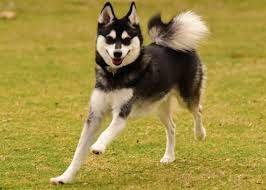
Types of Exercise
Alaskan Klee Kais benefit from a combination of physical exercise and mental stimulation. Here are some exercise options to keep your Klee Kai healthy and content:
1. Daily Walks:
- Duration: 30 minutes to 1 hour per day.
- Frequency: At least once or twice a day.
Daily walks are essential for your Alaskan Klee Kai. These outings provide physical exercise, opportunities for socialization, and mental stimulation as your dog encounters different sights and scents.
2. Playtime:
- Duration: 20-30 minutes of active play.
- Frequency: Several times a day.
Interactive play sessions are crucial for burning off your Klee Kai’s energy. Play fetch, engage in tug-of-war, or use puzzle toys to keep their mind and body active.
3. Agility Training:
- Duration: 15-30 minutes per session.
- Frequency: A few times a week.
Alaskan Klee Kais excel in agility training. This activity provides both physical exercise and mental challenges. Set up agility courses in your yard or at a dog park for your Klee Kai to enjoy.
4. Hiking:
- Duration: 1-2 hours.
- Frequency: Once a week or as suitable for your dog’s fitness level.
Hiking is an excellent way to provide your Alaskan Klee Kai with a more challenging and adventurous exercise. Choose trails with varying terrain to keep them engaged.
5. Obedience Training:
- Duration: Short, 5-10 minute training sessions.
- Frequency: Daily.
Incorporate obedience training into your daily routine. Alaskan Klee Kais are intelligent and enjoy learning new commands. This mental exercise strengthens your bond with them and reinforces good behavior.
6. Mental Stimulation:
- Duration: Varied, throughout the day.
- Frequency: As needed.
Keep your Alaskan Klee Kai mentally stimulated with puzzle toys, treat-dispensing toys, and food puzzles. These activities challenge their problem-solving skills and prevent boredom.
Breed-Specific Exercise Needs
Alaskan Klee Kais have a few breed-specific exercise needs due to their Husky heritage:
1. Sledding or Pulling:
- Duration: Varies based on conditions.
- Frequency: Occasionally.
These dogs have a natural inclination to pull sleds or weights due to their heritage. While this activity may not be practical for most owners, you can simulate pulling games or attach a weight-pulling harness for exercise.
2. Swimming:
- Duration: 30 minutes to 1 hour.
- Frequency: As often as possible.
Swimming is a great exercise for Alaskan Klee Kais, especially during the warmer months. It provides a full-body workout and helps them cool off.
Tips for Safe Exercise
Avoid Overexertion: While they have high energy levels, be cautious not to overexert your Alaskan Klee Kai, especially in hot weather. These dogs are better suited to colder climates, so pay attention to signs of overheating.
Hydration: Always have fresh water available during and after exercise. Hydration is crucial, especially if you’re engaging in activities like hiking or sledding.
Paw Care: Check your dog’s paws for injuries or irritations after outdoor activities. The rough terrain can sometimes cause paw pad issues.
Gradual Increase: If your dog is not accustomed to strenuous exercise, start slowly and gradually increase the intensity and duration of activities to build their fitness level.
Supervision: Supervise your Alaskan Klee Kai during exercise, especially in unfenced areas. Their strong prey drive might lead them to chase small animals.
Variety: Mix up the types of exercise to keep your dog mentally engaged and prevent boredom.
- Socialization: Use exercise as an opportunity for socialization. Encourage positive interactions with other dogs and people during walks and outings.
Remember that every dog is unique, and exercise needs can vary based on your Alaskan Klee Kai’s age and individual preferences. Pay attention to their signals and adapt your exercise routine accordingly. Regular exercise not only keeps your Klee Kai physically fit but also helps maintain their mental well-being.
In the next section, we’ll explore grooming requirements for your Alaskan Klee Kai to ensure their coat remains healthy and attractive.
- Grooming Needs and Coat Care:
• Discuss the breed’s coat type and colors.
• Provide a detailed grooming guide, including brushing, bathing, and special considerations for the breed.
• Offer tips for managing shedding.
• Discuss the importance of regular ear cleaning, teeth brushing, and nail trimming.
• Highlight the need for professional grooming and when to seek a groomer’s assistance.
• Include information about breed-specific grooming tools and products.
Grooming Needs and Coat Care for Alaskan Klee Kai
The Alaskan Klee Kai’s striking appearance, with its plush double coat and distinctive coat patterns, demands regular grooming to keep them healthy and looking their best. In this section, we’ll discuss the breed’s coat type and colors, provide a detailed grooming guide, offer tips for managing shedding, and emphasize the importance of regular ear cleaning, teeth brushing, and nail trimming. We’ll also highlight the need for professional grooming and when to seek a groomer’s assistance. Additionally, we’ll include information about breed-specific grooming tools and products.
Coat Type and Colors
Coat Type: Alaskan Klee Kais have a plush double coat, which consists of a soft undercoat that provides insulation and a thicker, protective topcoat. Their coat helps them withstand cold weather, making them well-suited for cooler climates.
Colors: Alaskan Klee Kais exhibit a wide range of coat colors, and their coat can be of various patterns. Common colors include black and white, gray and white, red and white, and even all-white coats. Additionally, they often have distinctive facial markings and mask-like patterns.
Grooming Guide
Regular grooming is essential to maintain your Alaskan Klee Kai’s coat and overall health. Here’s a detailed grooming guide to keep your Klee Kai in top condition:
1. Brushing:
- Frequency: 2-3 times a week.
- Tool: Use a slicker brush or undercoat rake to remove loose hair and prevent matting.
Regular brushing helps control shedding and maintains the health of the double coat. Brush thoroughly, paying extra attention to areas where the fur tends to mat, such as behind the ears and under the legs.
2. Bathing:
- Frequency: Every 2-3 months or as needed.
- Shampoo: Use a mild, dog-specific shampoo.
- Note: Avoid frequent bathing as it can strip the coat of its natural oils.
Bathing your Alaskan Klee Kai should be done as necessary. Over-bathing can lead to dry skin and coat issues. Make sure to rinse thoroughly to remove all shampoo residues.
3. Eye Care:
- Frequency: Weekly.
- Note: Some Alaskan Klee Kais are prone to tear staining. Gently clean around the eyes with a damp cloth to prevent staining.
The distinctive facial markings of your Klee Kai may require regular cleaning to prevent tear staining. Be gentle when cleaning around the eyes to avoid irritation.
4. Ear Cleaning:
- Frequency: Weekly.
- Tool: Use a dog-specific ear cleaning solution and cotton balls.
Regular ear cleaning helps prevent ear infections. Gently wipe the ears’ inner flaps and avoid inserting anything into the ear canal. If you notice signs of infection, consult your vet.
5. Teeth Brushing:
- Frequency: Daily or at least 2-3 times a week.
- Tool: Use a dog-specific toothbrush and toothpaste.
Oral hygiene is essential for your dog’s overall health. Brushing your Klee Kai’s teeth regularly helps prevent dental issues.
6. Nail Trimming:
- Frequency: Every 3-4 weeks or as needed.
- Tool: Use dog-specific nail clippers or a grinder.
Trimming your dog’s nails helps prevent overgrowth and keeps them comfortable. Be cautious not to cut too close to the quick, which can cause bleeding.
7. Professional Grooming:
- Frequency: Occasionally.
- Note: Consider professional grooming for tasks like trimming the fur between paw pads or managing heavy shedding during seasonal changes.
While you can handle most grooming tasks at home, professional grooming may be needed for specific tasks or during heavy shedding periods.
Managing Shedding
Alaskan Klee Kais shed year-round, and their double coat can lead to significant fur accumulation in your home. To manage shedding:
- Regular brushing is your best tool for reducing shedding. Brush your dog outside to minimize hair in your home.
- Invest in a quality vacuum cleaner designed for pet hair to keep your home clean.
- Wash your dog’s bedding regularly to remove trapped hair.
- A high-quality diet can also help minimize shedding and improve coat health.
Breed-Specific Grooming Tools and Products
When grooming your Alaskan Klee Kai, it’s beneficial to have specific tools and products designed for their coat type and needs. Here are some recommendations:
Slicker brush: This type of brush is excellent for removing loose hair and preventing matting in the undercoat.
Undercoat rake: An undercoat rake helps remove dead hair from the dense undercoat.
Mild, dog-specific shampoo: Look for a shampoo formulated for dogs, and avoid harsh human shampoos that can irritate their skin.
Ear cleaning solution: A dog-specific ear cleaning solution helps maintain ear health and prevent infections.
Toothbrush and toothpaste: Use toothbrushes and toothpaste formulated for dogs to ensure safe and effective oral care.
Nail clippers or grinder: Invest in quality nail clippers or a grinder designed for dogs to make nail trimming easier and safer.
By following this grooming guide and using the right tools and products, you can ensure that your Alaskan Klee Kai’s coat remains healthy, shiny, and free from mats or tangles. Additionally, maintaining regular grooming routines helps you monitor your dog’s overall health and well-being.
In the next section, we’ll discuss exercise and activity recommendations to keep your Alaskan Klee Kai physically fit and mentally stimulated.
Nutrition and Feeding Guidelines for Alaskan Klee Kai
Proper nutrition is essential for maintaining the health and well-being of your Alaskan Klee Kai. Their size, activity level, and age all play a crucial role in determining their dietary requirements. In this section, we will provide specific dietary recommendations, discuss common dietary restrictions or allergies associated with the breed, and address feeding schedules and portion control.
Dietary Recommendations
1. High-Quality Dog Food:
Choose a high-quality commercial dog food that is specifically formulated for small to medium-sized breeds. Look for options that list a quality protein source, such as chicken, lamb, or fish, as the first ingredient. Avoid dog foods with excessive fillers or artificial additives.
2. Protein:
Protein is essential for your Alaskan Klee Kai’s muscle development and overall health. Aim for a dog food that contains around 20-30% protein. High-quality animal-based protein sources are preferable.
3. Fat:
Dietary fat provides a concentrated source of energy. Look for dog food with a moderate fat content, ideally around 10-15%. The specific amount may vary based on your dog’s activity level.
4. Carbohydrates:
Carbohydrates should come from wholesome sources like brown rice, sweet potatoes, or peas. They provide fiber and energy. Ensure the carbohydrate content is around 30-40% in the dog food.
5. Fiber:
A moderate amount of dietary fiber helps with digestion. Look for dog food with 3-5% fiber content.
6. Essential Nutrients:
Check for essential nutrients like vitamins, minerals, and antioxidants. These components support your dog’s immune system and overall health.
7. Avoid Allergens:
Be aware of common allergens in dog food. Alaskan Klee Kais can be sensitive to certain ingredients, such as grains or specific protein sources. If your dog displays signs of allergies, consult with your veterinarian to identify and manage them.
8. Portion Control:
Follow the feeding guidelines on the dog food packaging as a starting point. Adjust the portions based on your dog’s age, activity level, and individual needs. Monitor their weight and adjust as necessary to maintain a healthy body condition.
9. Fresh Water:
Always provide access to fresh, clean water. Proper hydration is crucial for your Alaskan Klee Kai’s health.
10. Avoid Overfeeding:
Due to their smaller size, it’s essential to avoid overfeeding your Alaskan Klee Kai. Obesity can lead to various health issues. Stick to a regular feeding schedule and measure portions to prevent overeating.
Dietary Restrictions and Allergies
Alaskan Klee Kais may have specific dietary restrictions and allergies. Common allergens include:
Grains: Some Alaskan Klee Kais may be sensitive to grains like wheat, corn, or soy. Grain-free dog food can be an option for dogs with grain allergies.
Protein Allergies: Pay attention to any signs of allergies related to specific protein sources. If your dog experiences itching, digestive issues, or skin problems after eating certain proteins, consult your vet.
Artificial Additives: Some dogs are sensitive to artificial colors, preservatives, or flavor enhancers. Choose dog foods with minimal artificial additives to minimize potential sensitivities.
Dairy: While not all Alaskan Klee Kais are lactose intolerant, it’s possible for some to have difficulty digesting dairy products. Monitor your dog’s response to dairy treats.
Food Sensitivities: Dogs can develop sensitivities to various ingredients over time. Be observant of any changes in your dog’s health and consult your vet if you suspect food sensitivities.
It’s important to observe your Alaskan Klee Kai’s reactions to different foods and make dietary adjustments accordingly. If you suspect food allergies or sensitivities, consult with your veterinarian for guidance on an elimination diet or allergy testing.
Feeding Schedule
Establishing a regular feeding schedule helps maintain your Alaskan Klee Kai’s digestive health and prevents overeating. Here’s a general feeding schedule:
- Puppies (8-12 weeks): 3-4 meals per day.
- Puppies (3-6 months): 3 meals per day.
- Puppies (6 months to 1 year): 2 meals per day.
- Adults (1 year and older): 2 meals per day.
Divide your dog’s daily portion into two meals. Feeding at consistent times each day helps with housetraining and creates a routine that your Alaskan Klee Kai can rely on.
In the following sections, we will delve into specific health considerations, exercise needs, and areas where the Alaskan Klee Kai excels as a companion dog. Understanding these aspects will help you provide the best care and support for your beloved furry friend.
Personal Stories and Testimonials
One of the most valuable insights into the world of Alaskan Klee Kais comes from the experiences of their owners. These personal stories and testimonials provide a glimpse into the joys, challenges, and unique bond that exists between these dogs and their human companions. Let’s take a look at some real-life stories shared by Alaskan Klee Kai owners.
Testimonial 1: The Adventure Buddy
Name: Sarah M.

“Having an Alaskan Klee Kai in my life has been an incredible adventure. Luna, my beloved Klee Kai, is my constant companion on hiking trips and outdoor excursions. Her boundless energy and love for exploring have added a new dimension to my life.
I was initially drawn to the breed because of their Husky-like appearance and manageable size. Luna’s striking coat and those captivating blue eyes were impossible to resist. As a hiker and outdoor enthusiast, I wanted a dog who could keep up with me on the trails, and Luna has exceeded my expectations.
Our daily hikes are not only great exercise for both of us but also a time to bond and connect with nature. Luna’s intelligence shines through as she navigates challenging terrains and adapts to different environments. Whether we’re hiking through snowy mountains or meandering in the woods, Luna’s enthusiasm is infectious.
Of course, owning an Alaskan Klee Kai comes with its challenges. Shedding is a real thing, and it requires diligent grooming to manage. Luna is also quite the talker – her vocal nature makes it seem like we’re having a conversation sometimes. But her loyalty and affection more than make up for any inconveniences.
For anyone considering this breed, I’d say, be ready for an adventure of a lifetime. If you’re an active individual who enjoys the outdoors, an Alaskan Klee Kai can be your perfect adventure buddy.”
Testimonial 2: The Companion for All Ages
Name: Robert L.
“My journey with Alaskan Klee Kais began when we welcomed Max into our family. What struck me immediately was their adaptability. Max gets along with everyone, from my young kids to my elderly parents. This breed’s compatibility with different age groups is truly remarkable.
Max’s gentle nature is evident in every interaction. He’s playful with the kids but also knows when it’s time to be calm around my parents. The fact that they are good with both children and seniors is a testament to their versatility as a companion.
Their intelligence is another standout quality. Max has quickly learned various commands and tricks, which has made training a breeze. Keeping him mentally stimulated is equally rewarding. Puzzle toys and interactive games are his favorites.
As a family, we appreciate the ease of grooming and coat care, thanks to the comprehensive guide provided by our breeder. We’ve found that the regular brushing sessions have become a bonding time for Max and each family member. It’s a therapeutic process for us as much as it is for him.
One of the highlights of owning Max is the feeling of security he provides. He’s vigilant without being aggressive, and his presence alone can deter potential threats. This makes us feel safe and protected.
So, if you’re looking for a family companion that fits seamlessly into every generation, the Alaskan Klee Kai is an ideal choice. They bring joy, laughter, and a sense of security to every household.”
Testimonial 3: The Perfect Urban Companion
Name: Emily S.
“Living in a city apartment, I was initially hesitant about owning a dog. The space constraints made me think twice. However, when I learned about Alaskan Klee Kais, my perspective shifted. I knew I had found the perfect urban companion in Luna.
Luna’s size, adaptability to apartment living, and moderate exercise needs have made her an ideal pet for city life. Our daily routine includes a morning walk in the nearby park, followed by interactive play sessions and some training exercises. She’s content to snuggle up with me in the evenings.
Her unique coat patterns and beautiful eyes never fail to turn heads during our city strolls. Despite the urban setting, Luna’s connection to nature is evident as she explores every nook and cranny of the park.
Grooming has become a part of our weekly routine, and I’ve discovered the joy of keeping her coat in top condition. The shedding, although present, has been manageable with regular brushing.
What I appreciate most is Luna’s adaptability to my work schedule and the bustling city environment. Her calm and collected demeanor in crowded places has impressed me. She’s my daily source of happiness and relaxation, making city life so much more enjoyable.
For those who live in urban areas and worry about dog ownership, I’d say that Alaskan Klee Kais can thrive in city living. With the right care and attention, they’re the perfect companions for those of us in the concrete jungle.”
Testimonial 4: A Lifelong Friendship
Name: David R.
“My journey with Alaskan Klee Kais began years ago when I got Shadow as a puppy. What I didn’t fully realize at the time was that I was entering into a lifelong friendship that would bring me immeasurable joy and a few challenges along the way.
Shadow is more than a pet; he’s a family member. The connection we share is something I can’t put into words. The loyalty, affection, and unwavering companionship he’s given me have been a constant source of happiness.
The challenges, of course, include the shedding, especially during the change of seasons. But the bond we share makes the regular grooming sessions a labor of love. The playtime, walks, and adventures we’ve had together far outweigh the extra time spent on grooming.
One of the most rewarding aspects of owning a Klee Kai is their intelligence. Shadow is incredibly smart and always eager to learn new tricks and commands. This has not only strengthened our bond but also enriched my life with memorable moments.
He’s my confidant, my exercise partner, and my source of comfort during difficult times. And I can’t imagine my life without him. If you’re considering an Alaskan Klee Kai, be ready for a lifelong friend who will bring immeasurable love and happiness to your life.”
These personal stories and testimonials capture the essence of the Alaskan Klee Kai experience – a blend of adventure, adaptability, loyalty, and cherished companionship. The breed has touched the lives of many with its unique qualities, making it a beloved choice for individuals and families alike.
Cost of Owning an Alaskan Klee Kai
Owning an Alaskan Klee Kai comes with various expenses, both upfront costs and ongoing care. It’s essential to be aware of these costs and budget for them to provide your Klee Kai with the best possible care. Let’s break down the expenses associated with Alaskan Klee Kai ownership.
Upfront Costs
Adoption or Purchase: The initial cost of acquiring an Alaskan Klee Kai can vary widely. Adoption fees from rescue organizations are typically lower than purchasing a puppy from a breeder. On average, the cost of buying a Klee Kai puppy from a reputable breeder can range from $1,500 to $3,000 or more, depending on the breeder’s reputation and the puppy’s lineage.
Supplies and Equipment: You’ll need to invest in essential supplies and equipment, such as a crate, leash, collar, food and water bowls, toys, grooming tools, and bedding. These initial costs can range from $200 to $500 or more.
Initial Veterinary Expenses: Right after bringing your Klee Kai home, you’ll need to visit the veterinarian for a thorough checkup, vaccinations, and preventive treatments. These initial vet expenses can add up to $200 to $400.
- Training and Socialization: Enrolling your Klee Kai in puppy training classes or investing in private training sessions can enhance their behavior and socialization skills. These classes may cost around $100 to $300.
Ongoing Expenses
Food: High-quality dog food is essential for your Klee Kai’s health. The monthly cost of food can vary based on the brand and your dog’s size, but it typically ranges from $30 to $60.
Veterinary Care: Regular veterinary check-ups, vaccinations, and preventive medications are ongoing costs. These expenses can add up to $300 to $600 annually, depending on your location and the specific needs of your dog.
Grooming: Alaskan Klee Kais require regular grooming, including brushing, bathing, and occasional professional grooming. Grooming supplies and professional grooming sessions can amount to $200 to $500 annually.
Training and Socialization: Ongoing training, socialization outings, and additional classes can cost $100 to $300 per year.
Pet Insurance: Consider investing in pet insurance to cover unexpected medical expenses. The cost of pet insurance can vary but typically ranges from $20 to $50 per month.
Toys and Enrichment: Providing toys and mental stimulation activities is essential for your Klee Kai’s well-being. These costs can amount to $100 to $200 annually.
Licensing and Registration: Depending on your location, there may be fees associated with licensing and registering your dog, which can range from $10 to $50 per year.
Dog Walking or Pet Sitting: If you require the services of a dog walker or pet sitter while you’re at work or away, this can cost $15 to $30 per visit, depending on the duration.
Emergency Fund: It’s wise to set aside some money for unexpected emergencies or medical expenses. Having an emergency fund for your dog can provide peace of mind.
Travel Expenses: If you plan to travel with your Klee Kai, consider expenses for accommodations, transportation, and any pet-related costs during your trips.
Specialty Items: Depending on your Klee Kai’s specific needs or preferences, there may be additional costs for specialty items, such as a cooling vest for hot weather or winter gear for cold climates.
Keep in mind that these costs can vary depending on your location, the quality of products and services you choose, and your dog’s individual needs. Proper budgeting is crucial to ensure that you can provide your Alaskan Klee Kai with a happy, healthy, and comfortable life. It’s also important to consider the long-term commitment of owning a dog and plan for their care throughout their lifespan.
Owning an Alaskan Klee Kai is a rewarding experience, but it’s essential to be prepared for the financial responsibilities that come with it. When you provide your Klee Kai with the care and love they deserve, you’ll be rewarded with the companionship and loyalty of this remarkable breed.
Grooming and Care for Alaskan Klee Kai
Grooming and care are essential aspects of keeping your Alaskan Klee Kai healthy, happy, and looking their best. In this section, we will provide general advice on grooming and offer tips on maintaining the well-being of your Alaskan Klee Kai. Additionally, we’ll recommend specific accessories and care products tailored to the breed’s needs, including grooming tools, harnesses, and toys.

General Grooming Advice
Alaskan Klee Kais have a plush double coat that requires regular grooming to keep it in top condition. Here are some general grooming tips to ensure your dog looks and feels their best:
Brushing: Regular brushing is crucial for your Alaskan Klee Kai. Brush their coat at least two to three times a week to prevent matting and reduce shedding. A slicker brush or undercoat rake can be useful for this breed.
Bathing: Bathe your Klee Kai as needed, typically every 2 to 3 months. Use a mild dog shampoo and be sure to rinse thoroughly. Bathing too frequently can strip their coat of natural oils.
Ears: Check your dog’s ears regularly for signs of infection or dirt buildup. Clean their ears with a veterinarian-recommended ear cleaner if necessary.
Teeth: Brush your Alaskan Klee Kai’s teeth at least three times a week to maintain good oral health. Dental chews and toys can also help keep their teeth clean.
Nails: Trim your dog’s nails regularly to prevent overgrowth and discomfort. If you’re not comfortable doing this yourself, consider seeking professional help.
Coat Care: During shedding seasons, increase the frequency of brushing to manage the shedding. A deshedding tool can be particularly effective during this time.
- Skin and Coat Health: Pay attention to your dog’s skin and coat health. If you notice any skin issues, dryness, or hot spots, consult your veterinarian for guidance.
Accessories and Care Products
To make the grooming and care process more manageable and enjoyable for both you and your Alaskan Klee Kai, consider these accessories and care products:
Grooming Tools:
- Slicker Brush: This brush helps remove loose hair and prevents matting in your dog’s dense coat.
- Undercoat Rake: An undercoat rake is effective for removing the soft undercoat fur during shedding seasons.
- Deshedding Tool: A deshedding tool is specifically designed to reduce shedding and thin out the undercoat.
- Nail Clippers: Invest in high-quality nail clippers to trim your dog’s nails safely.
- Ear Cleaner: A veterinarian-recommended ear cleaner can help you maintain your dog’s ear health.
Harness and Leash:
- Using a well-fitting harness instead of a collar can help protect your Alaskan Klee Kai’s delicate neck. Ensure it’s comfortable and secure.
Toys:
- Interactive and puzzle toys are great for mental stimulation. They keep your dog engaged and prevent boredom.
Pet Dental Care Products:
- Dog-specific toothbrushes and toothpaste can make teeth brushing more effective and enjoyable for your dog.
Dog Shampoo and Conditioner:
- Choose a mild and dog-friendly shampoo and conditioner to keep your dog’s coat clean and healthy.
Pet Wipes:
- Pet wipes are handy for quick clean-ups and can help keep your dog’s paws and coat fresh between baths.
Gentle Grooming Practices:
- When grooming, be gentle and patient. Use positive reinforcement and treats to make the experience pleasant for your dog.
Safety Accessories:
- Consider safety accessories like reflective collars, tags, and LED lights for evening walks to keep your Alaskan Klee Kai visible.
By incorporating these grooming tools and care products into your routine, you can ensure that your Alaskan Klee Kai stays comfortable, healthy, and well-groomed.
Health and Well-being
In addition to grooming, the overall health and well-being of your Alaskan Klee Kai are paramount. Here are some additional tips to ensure your dog leads a happy and fulfilling life:
Regular Veterinary Check-ups: Schedule annual check-ups with your veterinarian to monitor your dog’s health, administer vaccinations, and provide preventive care.
Proper Nutrition: Feed your Alaskan Klee Kai a balanced and high-quality diet that meets their specific nutritional needs. Consult with your veterinarian to determine the best diet for your dog.
Exercise and Mental Stimulation: Alaskan Klee Kais have high energy levels and require regular exercise and mental stimulation. Ensure they get daily walks, playtime, and engaging activities.
Socialization: Early and ongoing socialization is vital to ensure your Alaskan Klee Kai is well-adjusted and comfortable in various situations and around other pets.
Weight Management: Maintain a healthy weight for your dog to reduce the risk of joint problems and other health issues. Consult with your vet to determine the appropriate weight range for your dog.
Safety Measures: Protect your Alaskan Klee Kai from extreme temperatures, especially heat. These dogs are better suited to colder climates, so be cautious during hot weather.
- Stress Management: Minimize stress in your dog’s life. They can be sensitive to changes in their environment, so provide a stable and loving home.
By following these tips and providing your Alaskan Klee Kai with a loving and attentive home, you can contribute to their longevity and ensure they lead a happy and healthy life.
The combination of regular grooming and overall care ensures that your Alaskan Klee Kai not only looks their best but also thrives in all aspects of their life. With proper grooming tools and the right care products, you can make this process easier and more enjoyable for both you and your beloved companion.
Grooming Needs and Coat Care
Proper grooming is crucial to keeping your Alaskan Klee Kai’s coat healthy and looking its best. In this section, we will discuss the breed’s coat type and colors, provide a detailed grooming guide, including brushing, bathing, and special considerations for the breed, and offer tips for managing shedding.
Coat Type and Colors
Coat Type: Alaskan Klee Kais have a double coat. The undercoat is soft and insulating, while the outer coat is straight and slightly harsh. This double coat is designed to protect them from cold temperatures, making them well-suited for their Alaskan heritage.
Colors: Alaskan Klee Kais come in a variety of colors, including black and white, gray and white, red and white, and even all-white coats. Their coat colors are often accompanied by unique patterns and facial markings, which add to their visual appeal.
The diverse coat colors and patterns make each Alaskan Klee Kai truly one-of-a-kind. Regular grooming is necessary to maintain the health and appearance of their coat.
Grooming Guide
Brushing:
Regular brushing is essential to keep your Alaskan Klee Kai’s coat in top condition and to manage shedding. Here’s a step-by-step guide to brushing:
Use the Right Tools: You’ll need a slicker brush, a pin brush, and a metal comb. These tools will help you effectively remove loose hair and prevent matting.
Start with the Undercoat: Begin by brushing the soft undercoat. Brush in the direction of hair growth to prevent discomfort for your dog. Pay special attention to the areas where tangles and mats tend to form, such as behind the ears and in the neck area.
Move to the Outer Coat: After you’ve addressed the undercoat, use the pin brush to gently brush the outer coat. Again, brush in the direction of hair growth, taking care not to pull or tug on the hair.
Check for Mats: Use a metal comb to check for any remaining mats or tangles. If you encounter any, gently work them out with your fingers or use a mat splitter if necessary.
Pay Attention to Specific Areas: Don’t forget to brush the tail, legs, and the hair between the toes. These areas can also develop mats if not properly cared for.
Regularity: Aim to brush your Alaskan Klee Kai at least two to three times a week. During seasonal changes when they shed more heavily, daily brushing can help manage the shedding.
Bathing:
Bathing your Alaskan Klee Kai should be done as needed, typically every 2 to 3 months. Follow these steps for a successful bath:
Brush Before Bathing: Brush your dog thoroughly before the bath to remove any loose hair and mats.
Temperature Matters: Ensure the water temperature is comfortably warm, not hot or cold. Use a handheld spray nozzle or a container to wet your dog’s coat thoroughly.
Shampoo and Rinse: Apply a dog-specific shampoo, and gently lather it into the coat, avoiding the eyes and ears. Rinse thoroughly, making sure to remove all the shampoo.
Condition if Necessary: If your dog’s coat tends to get dry, you can apply a dog conditioner. Leave it on for a few minutes before rinsing.
Towel Dry: Towel dry your Alaskan Klee Kai to remove excess water. Use a hairdryer on a low setting to avoid overheating and thoroughly dry their coat.
- Comb After Bath: After your dog is fully dry, comb through their coat to ensure there are no mats or tangles.
Special Considerations:
Nails: Regularly trim your dog’s nails to prevent them from getting too long and causing discomfort. If you’re not comfortable doing this yourself, seek the help of a professional groomer or veterinarian.
Eyes and Ears: Clean your dog’s eyes and ears as needed. Use a damp cloth to gently wipe away any discharge around the eyes, and use a dog-specific ear cleaner for their ears.
Tooth Care: Brush your Alaskan Klee Kai’s teeth regularly to maintain good oral health. Dental chews and toys can also help reduce tartar buildup.
- Seasonal Shedding: Be prepared for increased shedding during seasonal changes. More frequent brushing and use of a deshedding tool can help manage this.
Tips for Managing Shedding
Alaskan Klee Kais are known to shed moderately to heavily, especially during seasonal transitions. Managing shedding is an important aspect of grooming. Here are some tips to help you deal with shedding:
Regular Brushing: Brush your dog frequently to remove loose hair and reduce shedding. This is the most effective way to manage their shedding.
Deshedding Tools: Invest in a quality deshedding tool designed for double-coated breeds. These tools can significantly reduce shedding by removing loose undercoat hair.
Healthy Diet: Ensure your dog is on a balanced and nutritious diet. Proper nutrition can contribute to a healthier coat.
Hydration: Ensure your dog drinks plenty of water to keep their skin and coat hydrated.
Supplements: Consult with your veterinarian about adding omega-3 fatty acid supplements to your dog’s diet. These can improve coat health and reduce shedding.
Environmental Control: Use air purifiers and regular cleaning to manage loose hair in your home.
- Routine Grooming: Stick to a consistent grooming schedule to prevent excessive shedding. In addition to brushing, consider professional grooming if you’re not confident in your grooming skills.
By following this grooming guide and these tips, you can keep your Alaskan Klee Kai’s coat healthy and minimize the impact of shedding in your home.
In the next section, we will discuss how to choose and adopt an Alaskan Klee Kai, including reasons for adoption, research and preparation, the adoption process, and responsible breeding considerations.
Choosing and Adopting an Alaskan Klee Kai Dog Breed
When considering bringing an Alaskan Klee Kai into your life, you have two primary options: adoption or purchasing from a breeder. In this section, we will explore the reasons for adopting an Alaskan Klee Kai, the importance of research and preparation, the adoption process, and responsible breeding considerations.
Reasons for Adoption
Adopting an Alaskan Klee Kai from a rescue organization or shelter is a compassionate and responsible choice. Here are some compelling reasons to consider adoption:
Give a Dog a Second Chance: Adoption gives a deserving dog a second chance at a loving and stable home. Many rescue dogs have faced hardship and abandonment and are in need of a caring family.
Promote Ethical Breeding: By adopting, you discourage unethical breeding practices such as puppy mills. These practices can lead to health issues in dogs and contribute to the overpopulation of pets.
Pre-Trained and Socialized: Many rescue dogs, including Alaskan Klee Kais, come from various backgrounds and may already be trained or socialized to some extent. This can make the transition to your home smoother.
Variety of Ages: Rescues offer dogs of various ages, allowing you to find a dog that suits your lifestyle, whether you’re looking for a playful puppy or a more mature companion.
Cost Savings: Adopting from a rescue or shelter is often more cost-effective than purchasing a puppy from a breeder. The adoption fee usually covers vaccinations and spaying/neutering.
Satisfaction of Saving a Life: There’s immense satisfaction in knowing that you’ve provided a loving and secure home for a dog in need.
Research and Preparation
Before adopting an Alaskan Klee Kai, thorough research and preparation are essential. Here are some key steps to take:
Understand the Breed: Learn about the specific characteristics, needs, and temperament of the Alaskan Klee Kai breed. Understanding the breed will help you make an informed decision and ensure you can meet their requirements.
Evaluate Your Lifestyle: Consider your living situation, work schedule, and daily routine. Ensure that you have the time, space, and resources to care for an Alaskan Klee Kai.
Research Rescue Organizations: Look for reputable rescue organizations or shelters that specialize in the breed. Research their adoption processes, fees, and the dogs they have available for adoption.
Prepare Your Home: Puppy-proof or dog-proof your home by removing potential hazards. Ensure you have the necessary supplies, such as food, water bowls, a comfortable bed, leash, and collar, ready before bringing your new dog home.
Training and Socialization: Plan for basic training and socialization. Enroll in training classes or seek guidance on how to train and socialize your Alaskan Klee Kai effectively.
Financial Responsibility: Be prepared for the financial responsibilities of dog ownership, which include food, grooming, veterinary care, and unexpected expenses.
- Long-Term Commitment: Remember that adopting a dog is a long-term commitment. Alaskan Klee Kais have a lifespan of 12 to 16 years, so ensure you’re ready for this extended commitment.
Adoption Process
The adoption process for an Alaskan Klee Kai may vary from one rescue organization or shelter to another. However, the following steps are typically involved:
Application: Start by filling out an adoption application provided by the rescue organization. Be prepared to answer questions about your living situation, experience with dogs, and why you want to adopt an Alaskan Klee Kai.
Interview: Some organizations may conduct an interview to further evaluate your suitability as an adopter. They may inquire about your expectations and dog-related knowledge.
Home Visit: A representative from the organization might visit your home to assess its safety and suitability for the dog. They may also offer suggestions for dog-proofing.
Adoption Fee: Be prepared to pay an adoption fee. This fee often covers vaccinations, spaying/neutering, and sometimes microchipping.
Meet and Greet: Once approved, you’ll meet the available dogs to determine compatibility. Spend time interacting with the dogs to find the one that best fits your lifestyle and preferences.
Finalize the Adoption: After selecting your Alaskan Klee Kai, you’ll complete the necessary paperwork and finalize the adoption. Ensure you understand the terms and any adoption agreements.
- Transition Period: Be patient during the initial transition period as your new dog adjusts to their new home. Provide love, care, and consistency during this time.
Breeding and Ethical Considerations
If you choose to purchase an Alaskan Klee Kai from a breeder, it’s crucial to do so responsibly. Here are some considerations when dealing with breeders:
Reputable Breeders: Seek out reputable breeders who prioritize the health and well-being of their dogs. Look for breeders who conduct health screenings for genetic issues and provide proper care for their dogs.
Health Checks: Ensure that the breeder conducts health checks on the parent dogs to minimize the risk of hereditary health issues being passed on to the puppies.
Ask Questions: Don’t hesitate to ask the breeder questions about their breeding practices, the living conditions of their dogs, and the socialization of the puppies.
Visit the Breeder: Whenever possible, visit the breeder’s facility to see the conditions in which the puppies are raised. A responsible breeder should be open to visits and transparent about their practices.
Contracts and Guarantees: Review any contracts or guarantees provided by the breeder. These documents should outline your responsibilities as the owner and the breeder’s commitments.
No Puppy Mills: Avoid purchasing from puppy mills, as these operations often prioritize profit over the well-being of the dogs. Reputable breeders do not operate puppy mills.
Remember that the decision to adopt or purchase an Alaskan Klee Kai is a significant one. Always prioritize the welfare of the dogs and ensure that your choice aligns with your values and commitment to responsible pet ownership.
In conclusion, whether you choose to adopt or purchase an Alaskan Klee Kai, your decision should be guided by careful research, ethical considerations, and a genuine desire to provide a loving and forever home for one of these unique and captivating companions.
Sure, here are 10 frequently asked questions (FAQs) about the Alaskan Klee Kai breed:
FAQ:
1. What is the origin of the Alaskan Klee Kai?
- The Alaskan Klee Kai was developed in the 1970s in Alaska, USA, by Linda Spurlin. She aimed to create a smaller version of the Alaskan Husky while preserving the Husky’s distinctive appearance.
2. Are Alaskan Klee Kais recognized by major kennel clubs?
- Yes, the United Kennel Club (UKC) officially recognized the Alaskan Klee Kai in 1997. While the American Kennel Club (AKC) has not granted full recognition, the breed is part of the Foundation Stock Service (FSS) program, which is a step toward eventual AKC recognition.
3. What are the size variations within the Alaskan Klee Kai breed?
- Alaskan Klee Kais come in three primary size classifications: Toy, Miniature, and Standard. Toy Klee Kais are the smallest, while Standard Klee Kais are the largest.
4. How long do Alaskan Klee Kais typically live?
- Alaskan Klee Kais have an average lifespan of 12 to 16 years. With proper care, some individuals may live longer.
5. Are Alaskan Klee Kais good with children and other pets?
- Alaskan Klee Kais are generally good with children but should be supervised around younger kids due to their small size. Their compatibility with other pets depends on early socialization and individual personalities.
6. Do Alaskan Klee Kais shed a lot?
- Yes, Alaskan Klee Kais have a moderate to heavy shedding coat. Regular grooming and brushing can help manage shedding.
7. Are they easy to train?
- Alaskan Klee Kais are highly intelligent and quick learners. With consistent training and socialization, they can be well-behaved and obedient.
8. Do Alaskan Klee Kais require a lot of exercise?
- Yes, they have high energy levels and need daily exercise. Regular walks, playtime, and mental stimulation are important to keep them happy and healthy.
9. What are common health issues in Alaskan Klee Kais?
- Common health issues include luxating patella, cardiac problems, thyroid disorders, juvenile cataracts, and allergies. Regular veterinary check-ups are essential to monitor and address these issues.
10. Do Alaskan Klee Kais make good apartment dogs?
- Yes, they can adapt to apartment living if they receive sufficient exercise and mental stimulation. However, they are better suited to living in homes with yards where they have space to play and explore.
These FAQs cover some of the most common questions about the Alaskan Klee Kai breed, helping prospective owners get a better understanding of this unique and captivating companion.
Grooming Needs and Coat Care for Alaskan Klee Kai
Maintaining the stunning appearance of your Alaskan Klee Kai is not just about aesthetics; it’s also crucial for their overall health and well-being. In this section, we’ll delve into the grooming needs and coat care requirements for this unique breed, ensuring that your furry companion remains happy, healthy, and looking their best.
Coat Type and Colors
The Alaskan Klee Kai is known for its double coat, which consists of a dense, insulating undercoat and a longer, protective topcoat. This combination of fur helps them adapt to colder climates and provides excellent protection against harsh weather. Their coat can come in various colors and patterns, making each Klee Kai truly unique. Common coat colors include black and white, gray and white, red and white, and even all-white coats. Some dogs may have striking patterns, including facial masks and distinct markings on their body. These distinctive colors and patterns add to their visual appeal and individuality.
Grooming Guide
To maintain your Alaskan Klee Kai’s coat and overall health, follow this grooming guide:
1. Regular Brushing:
- Frequency: 2 to 3 times a week.
Brushing is essential to keep your Klee Kai’s coat healthy and free of tangles. Use a pin brush or slicker brush to reach the dense undercoat. Regular brushing not only prevents matting but also reduces shedding.
2. Bathing:
- Frequency: Every 2 to 3 months or as needed.
Bathing should be done when your dog gets dirty or develops a strong doggy odor. Use a dog-specific shampoo, and ensure thorough rinsing to remove all soap residue. Be cautious not to over-bathe, as it can strip their coat of natural oils.
3. Coat Care:
- Maintenance: Regularly check for tangles, mats, or foreign objects in the coat. Use a detangling spray to ease brushing.
- Seasonal Shedding: Alaskan Klee Kais shed their undercoat seasonally. During these times, daily brushing is necessary to reduce shedding.
4. Ear Cleaning:
- Frequency: Weekly.
Keep your Klee Kai’s ears clean to prevent infections. Use a dog-specific ear cleaning solution and cotton balls to gently clean the ears. Avoid inserting anything deep into the ear canal.
5. Teeth Brushing:
- Frequency: At least 2-3 times a week.
Good dental care is vital. Brush your dog’s teeth with a dog-specific toothbrush and toothpaste to prevent dental issues.
6. Nail Trimming:
- Frequency: Monthly or as needed.
Regular nail trimming is essential to prevent overgrowth. Be cautious not to cut too close to the quick, as it can cause bleeding.
7. Professional Grooming:
- Frequency: As needed.
Some Alaskan Klee Kai owners choose professional grooming services for a more thorough coat care. Professional groomers can provide specific breed cuts and ensure your dog looks their best.
Shedding Management
Alaskan Klee Kais shed moderately to heavily, especially during seasonal changes. To manage shedding, follow these tips:
Regular Brushing: Daily brushing during shedding seasons helps remove loose fur and reduces the amount of hair left around your home.
Use a Deshedding Tool: Invest in a deshedding tool, specifically designed for double-coated breeds. These tools help remove loose undercoat hair.
Maintain a Healthy Diet: Proper nutrition can contribute to a healthier coat. Ensure your dog’s diet is rich in essential nutrients.
- Stay Hydrated: Proper hydration is essential for maintaining healthy skin and coat.
Professional Grooming
While regular at-home grooming is necessary, some Alaskan Klee Kai owners opt for professional grooming services, especially for more elaborate coat care. Professional groomers can provide breed-specific cuts and ensure that your dog’s coat remains in excellent condition. Depending on your preferences and your dog’s coat, you can choose to have your Alaskan Klee Kai professionally groomed as needed.
Conclusion
In this comprehensive guide, we’ve explored the Alaskan Klee Kai breed, its unique characteristics, grooming needs, exercise requirements, and overall care. Owning an Alaskan Klee Kai is not only an opportunity to welcome a visually stunning and intelligent companion into your life but also a commitment to responsible pet ownership.
Responsible ownership includes providing proper care, regular exercise, training, and socialization. Ensure that your Alaskan Klee Kai has a loving and stable environment, with access to regular veterinary care to maintain their health.
We also encourage prospective dog owners to consider adopting an Alaskan Klee Kai from a rescue organization. Adoption is a compassionate choice that offers a loving home to a dog in need. It’s essential to explore adoption options and support these organizations’ efforts to provide shelter, care, and love to dogs of this remarkable breed.
By following the guidance provided in this article and embracing the responsibilities of pet ownership, you can look forward to a fulfilling and loving relationship with your Alaskan Klee Kai, a truly unique and captivating companion.



